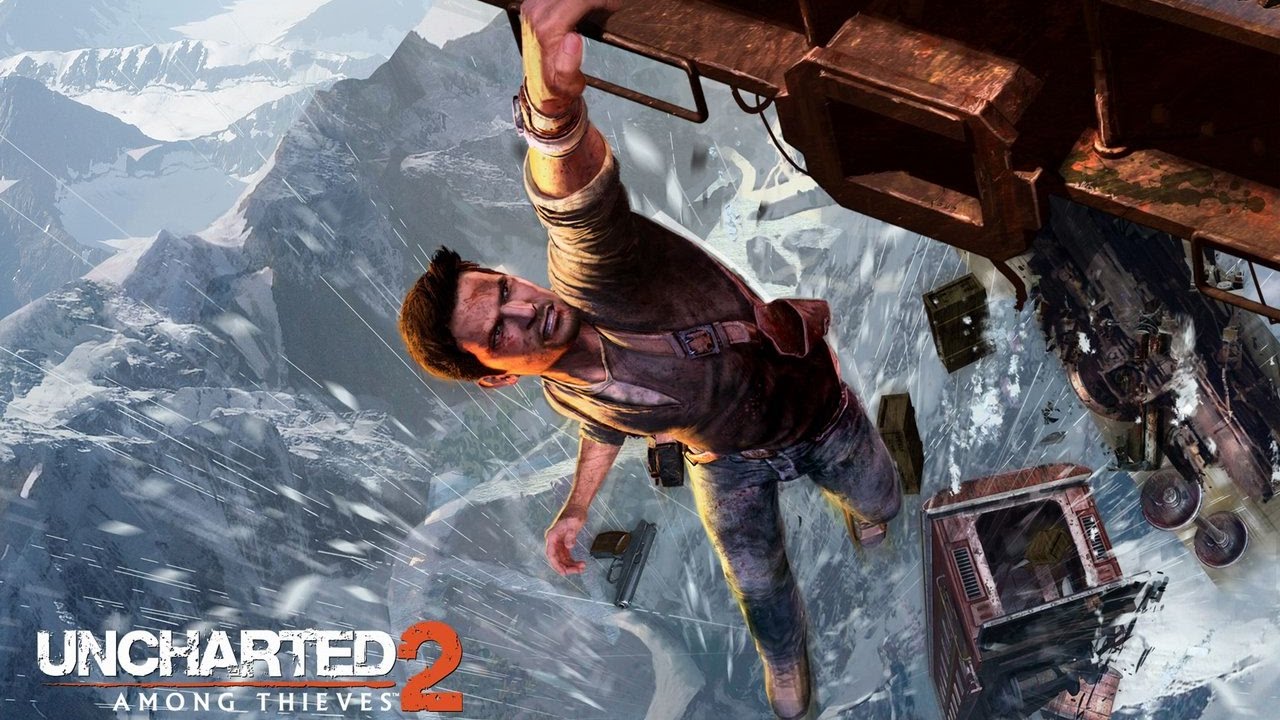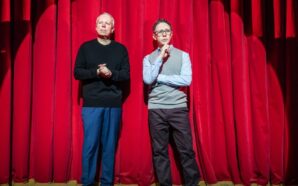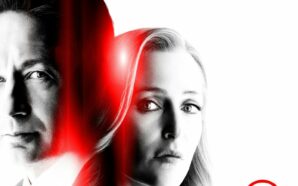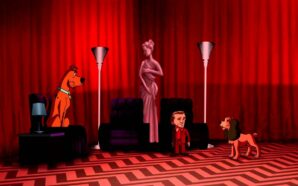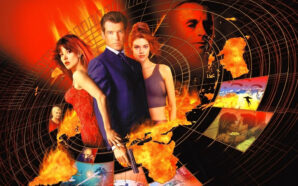Nathan Drake goes on an adventure. Following clues left by a legendary explorer, he tracks down an ancient treasure while being hunted by a villain and his army and falling in love with Elena Fisher. He uncovers a previous Nazi expedition before finding his prize guarded by supernatural creatures mutated by the treasure. After stumbling on a conversation where the villain and his main lackey argue over not finding the treasure already, the two betray each another and one ends up dead. In a long-hidden city, the primary antagonist gets his hands on the treasure but there’s a twist! It doesn’t imbue wealth but rather turns him into a monster. Having killed the villain, Nate and Elena look towards the horizon together after growing closer. Roll credits.
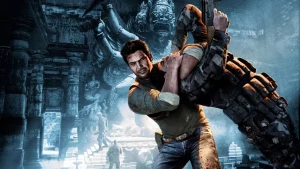 Now, is that Uncharted: Drake’s Fortune or Uncharted 2: Among Thieves? It is, in fact, a synopsis of both games. I love Uncharted 2 and will spend the best part of this article singing its praises but there is one point that has to be made absolutely clear: in many ways it is a remake of the first game. The framework of the story is near identical. This would be a significant problem if the game wasn’t also an improvement in every way. Uncharted 2 gets away with it because, while playing, it feels less like a repeat and more like Naughty Dog, the developers, are doing it properly, completely, this time. Uncharted 2 is such an incredible advancement in just two years, and perhaps gaming’s prime example of a sequel blowing the original out of the water.
Now, is that Uncharted: Drake’s Fortune or Uncharted 2: Among Thieves? It is, in fact, a synopsis of both games. I love Uncharted 2 and will spend the best part of this article singing its praises but there is one point that has to be made absolutely clear: in many ways it is a remake of the first game. The framework of the story is near identical. This would be a significant problem if the game wasn’t also an improvement in every way. Uncharted 2 gets away with it because, while playing, it feels less like a repeat and more like Naughty Dog, the developers, are doing it properly, completely, this time. Uncharted 2 is such an incredible advancement in just two years, and perhaps gaming’s prime example of a sequel blowing the original out of the water.
However, there is a danger in repeating the beats of the first game that Nate will learn nothing because he’s simply going on the same character journey as he did two years prior. Thankfully, this is where the game’s more sophisticated storytelling saves it. The side characters of Chloe and Flynn are key to Nate’s journey. They represent pre-Uncharted: Drake’s Fortune Nate. Thieves out for themselves that he knows from his past. But Nate has changed and going through the same narrative beats as the first game highlights this. He’s developed a heart and chooses his new family and life, Elena, over his old, Chloe. Flynn can’t change and dies a selfish man but Chloe can and ultimately does. Nate shows her how to have heart and honour in their profession, a relationship that shines a light on both of them. It’s a good story occupied by great characters but even so, on this revisit, knowing the depth of future instalments, it does feel a little slight and I wish there was one extra element or theme running through the narrative.
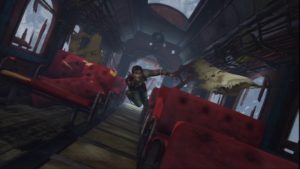 The game opens in medias res. A literal cliffhanger in an ode to the pulp adventure stories that have inspired the series. Nate, mysteriously injured, climbs out of the precarious wreckage of a crashed train in the first example of an environment falling apart while it is being traversed. This environmental action is such a key part of the series and its exclusion was felt while revisiting the first game. Drake’s Fortune was the pilot for the series and now, starting with the second game, Uncharted has truly arrived. While I love the whole series, this revisit has made certain that I think that the first game, for new players, is skippable and Uncharted 2 offers the best introduction to the franchise.
The game opens in medias res. A literal cliffhanger in an ode to the pulp adventure stories that have inspired the series. Nate, mysteriously injured, climbs out of the precarious wreckage of a crashed train in the first example of an environment falling apart while it is being traversed. This environmental action is such a key part of the series and its exclusion was felt while revisiting the first game. Drake’s Fortune was the pilot for the series and now, starting with the second game, Uncharted has truly arrived. While I love the whole series, this revisit has made certain that I think that the first game, for new players, is skippable and Uncharted 2 offers the best introduction to the franchise.
Uncharted 2 is immediately a more confident game than its predecessor. There is no sense that the developers are constantly throwing in gunfights just to keep the gamer engaged because they don’t have faith in their story or characters. Overall, it’s a fast-paced adventure, but the game isn’t afraid to linger on some moments or to slow down when necessary. After its flashforward, the game begins proper with a stealth section. There’re no gun battles but rather quiet sneaking through a museum while taking out guards silently. Stealth barely worked in the first game and is now much improved. Even the opening on the train has Nate shot in the stomach, only able to walk slowly, falling over every few metres. When guards with guns first appear, the game has you run away rather than fight them, and it’s great. I’m engaged enough by the story, atmosphere, and characters. Looking back, Naughty Dog’s realisation of this feels like a monumental step forward in their storytelling practices.
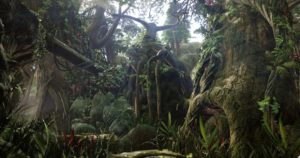 One key difference between the first and second game is the variety of locations. And yet while playing the game, the location I was most impressed with was the one that dominated Drake’s Fortune. The jungle environments detail how much the sequel is an improvement over the original. The advancement from 2007 to just 2009 is amazing. The jungle was once open and just felt like green-painted walls but in Uncharted 2 it feels truly oppressive. It’s dark, strewn out over unpredictable terrain, and quite oppressive to walk through. Another reason I think why the Borneo section stood out to me on this playthrough is because it’s the only part of the game featuring Sully. Before revisiting the series, I was convinced that the first three games were built around Nate and Sully’s relationship but, so far, Sullivan has been in the games surprisingly little. I’m now excited to see if this is also the case for Uncharted 3.
One key difference between the first and second game is the variety of locations. And yet while playing the game, the location I was most impressed with was the one that dominated Drake’s Fortune. The jungle environments detail how much the sequel is an improvement over the original. The advancement from 2007 to just 2009 is amazing. The jungle was once open and just felt like green-painted walls but in Uncharted 2 it feels truly oppressive. It’s dark, strewn out over unpredictable terrain, and quite oppressive to walk through. Another reason I think why the Borneo section stood out to me on this playthrough is because it’s the only part of the game featuring Sully. Before revisiting the series, I was convinced that the first three games were built around Nate and Sully’s relationship but, so far, Sullivan has been in the games surprisingly little. I’m now excited to see if this is also the case for Uncharted 3.
Unlike the first game with its island setting, Uncharted 2 is a globetrotting adventure with expansive scale. The urban environments are perhaps the most impressive and it’s only on this revisit that I realised how good the entire helicopter fight section of the game is. The building around you falls apart, every object moves independently, all while gameplay and combat continues. For 2009 it’s exceptional, and it actually feels like the world continues on outside the level’s walls, but I couldn’t help wondering what the Nepal part of the game would be like in a modern game, with more of an open world and perhaps a 4×4 to traverse the environment with. But now I’m just being greedy.
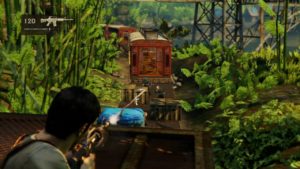 Unlike the scale and visuals, the gameplay of Uncharted 2 doesn’t quite have the same level of overhaul. Nate no longer does his little hop, and the traversal and gunplay is slightly refined, but importantly the game now knows how to utilise the existing systems better and transplant them into more exciting scenarios, the train being the prime example. I love the chapters on the train, maybe more than any other section of any Uncharted game, yet it’s quite simple. Just shift the existing action mechanics to a series of moving platforms. It’s literally on rails. It’s the setting and animations outside of the player’s actions that give the sequence the thrilling sense of scale. All you’re really doing is grabbing the edge of a train in the same manner you grab a rock. But deconstructing the sequence doesn’t do it justice. It’s an iconic piece of gaming history and just a joy to play today as it was 13 years ago.
Unlike the scale and visuals, the gameplay of Uncharted 2 doesn’t quite have the same level of overhaul. Nate no longer does his little hop, and the traversal and gunplay is slightly refined, but importantly the game now knows how to utilise the existing systems better and transplant them into more exciting scenarios, the train being the prime example. I love the chapters on the train, maybe more than any other section of any Uncharted game, yet it’s quite simple. Just shift the existing action mechanics to a series of moving platforms. It’s literally on rails. It’s the setting and animations outside of the player’s actions that give the sequence the thrilling sense of scale. All you’re really doing is grabbing the edge of a train in the same manner you grab a rock. But deconstructing the sequence doesn’t do it justice. It’s an iconic piece of gaming history and just a joy to play today as it was 13 years ago.
Further offering a glimpse at Naughty Dog’s growing confidence in its storytelling, what follows the train section is a slow, quiet hour or two in the Himalayas, first exploring a village and then a temple in the mountains. I love these moments in games, just walking through an environment, watching the locals, and building affection for a place before it’s eventually attacked. I also find Tenzin to be one of the game’s greatest and subtlest successes. Uncharted excels at placing two characters together and watching them bond through witty dialogue while traversing a gauntlet of some kind. Uncharted 2 manages this even though those two characters speak different languages and don’t understand each other.
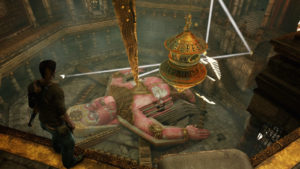 Among Thieves (has anyone ever called it that rather than Uncharted 2) is a long game and after the Himalayas section is where the pacing problems begin to surface. Firstly, and hypocritically, I actually wish the truck chase where Nate is leaping between vehicles went on for longer. It’s so much fun and I could happily spend 30 minutes doing it, and thankfully I remember that the sequels do expand on the chases. But this part of the game drags a little, particularly at the monastery. Overall, I have few complaints about the experience but some of the puzzles I found uninspired on this playthrough. It could be because so many games, like the Tomb Raider reboots, have taken inspiration from them but I never want to have to use mirrors to reflect sunlight ever again. I do remember the puzzles in these games being better but, so far, I’ve been disappointed.
Among Thieves (has anyone ever called it that rather than Uncharted 2) is a long game and after the Himalayas section is where the pacing problems begin to surface. Firstly, and hypocritically, I actually wish the truck chase where Nate is leaping between vehicles went on for longer. It’s so much fun and I could happily spend 30 minutes doing it, and thankfully I remember that the sequels do expand on the chases. But this part of the game drags a little, particularly at the monastery. Overall, I have few complaints about the experience but some of the puzzles I found uninspired on this playthrough. It could be because so many games, like the Tomb Raider reboots, have taken inspiration from them but I never want to have to use mirrors to reflect sunlight ever again. I do remember the puzzles in these games being better but, so far, I’ve been disappointed.
We arrive at Shambala. Why any of the characters couldn’t use a helicopter to just fly there, or why the city is peppered with seventy-year-old AK47s, I don’t know. But the city itself is a fantastic location and I could have happily have spent longer exploring it rather than the monastery. In keeping with the series’ sensibilities, Shambala hits the right balance of realistic and fantastical. The big blue Guardians who look like Na’vi on steroids are a harder pill to swallow but I do enjoy the series embracing the supernatural. Whether in their true form, or disguised as Yetis, they do make for refreshing enemy types to break up the standard gunplay.
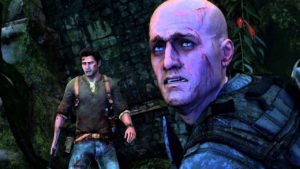 How do you show that a villain is a truly bad guy? Why, you have him kill one of his own men in his introductory scene, of course. Lazarevic is the game’s villain, a scarred warlord questing to become a conqueror. After the lame Navarro and Roman of Drake’s Fortune, Lazarevic is a step up, and certainly a threat to Nate, but there’s no getting away from the fact that he’s very generic. After replaying the game, after years of memes about how Nate, the hero, guns down thousands of people in each instalment, I was surprised to hear Lazarevic, as he’s dying, ask Nate “How many men have you killed?” Nate answers this by refusing to kill him and letting the Guardians rip him apart instead but I feel that is more of a non-answer. For this game, which I thought would ignore that question, it’s a fine moment, but, looking back, it is a good point brought up too late in the story without examination. That’s something you either have to ignore or dedicate time too, and because the game lacks something thematic other than Chloe and Nate’s reflective character growth, I think it would have been interesting to examine more closely.
How do you show that a villain is a truly bad guy? Why, you have him kill one of his own men in his introductory scene, of course. Lazarevic is the game’s villain, a scarred warlord questing to become a conqueror. After the lame Navarro and Roman of Drake’s Fortune, Lazarevic is a step up, and certainly a threat to Nate, but there’s no getting away from the fact that he’s very generic. After replaying the game, after years of memes about how Nate, the hero, guns down thousands of people in each instalment, I was surprised to hear Lazarevic, as he’s dying, ask Nate “How many men have you killed?” Nate answers this by refusing to kill him and letting the Guardians rip him apart instead but I feel that is more of a non-answer. For this game, which I thought would ignore that question, it’s a fine moment, but, looking back, it is a good point brought up too late in the story without examination. That’s something you either have to ignore or dedicate time too, and because the game lacks something thematic other than Chloe and Nate’s reflective character growth, I think it would have been interesting to examine more closely.
Uncharted 2’s ending isn’t the strongest part of the game, the boss fight being something of a disappointment when playing today, although still an improvement over the first game’s finale. As the game wraps up it also becomes apparent that it doesn’t have much of anything to say, and the character arcs, apart from Chloe’s, are thin. But that doesn’t matter. Unlike future games in the series, Uncharted 2 isn’t trying to hit those emotional beats and deep moments. It is the peak of Uncharted as a pulp adventure. And, playing it straight after Drake’s Fortune, the colossal upgrade in such little time is incredible. Almost everything the game attempts it is successful at, and playing today it’s hard to see Uncharted 2 as anything less than a masterpiece.
What are your thoughts on Uncharted 2: Among Thieves? Let me know in the comments and be sure to geek out with me about TV, movies and video-games on Twitter @kylebrrtt.




